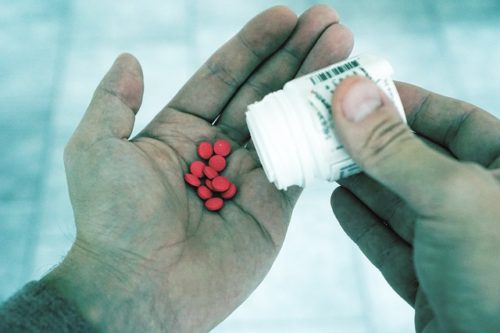
March 1, 2017; Reuters
Readers may remember that even as legislators got incensed about a 400 percent increase in the price of EpiPens, patient advocacy groups were relatively silent. Instead of opposing the price hike, the groups kept busy in creating the market conditions that would allow such gouging. In fact, pharmaceutical companies seem to have made it a central part of their business plans to charge out-of-control prices and then fund groups to help to offset those prices with charitable give-back programs. These kinds of relationships can lead to other problems, of course, especially when the corporate funders are in leadership positions on the governing board, as we have previously described.
Those following the emergence of this story will find no surprises in hearing that the norm for so-called patient advocacy organizations is close financial ties to companies involved in pharmaceuticals, biotechnology, and medical devices. The fact that taking such funding appears to be the dominant modus operandi in the field makes the serious conflict of interest issues raised by this all the more acute.
An article yesterday in the New England Journal of Medicine reports on the findings of a study that investigated 104 of the largest of these nonprofit organizations. More than eight in ten get financial support from such corporations, more than a third have at least one industry representative on their governing body, and 12 percent have an industry official listed as leading the board.
“Concerns have been raised that industry-supported patient-advocacy organizations have spoken out for access to drugs with questionable therapeutic benefit and remained silent on policy proposals, such as drug-pricing reforms, that might benefit their constituents,” writes the research team from the University of Pennsylvania in Philadelphia, who believe that the influence of the corporations is understated even in this study.
What they did find, however, is nothing short of shocking. Many of the organizations, none of which has an annual budget under $7.5 million, are far less than transparent on their sources of revenue and board members. Still, around 40 percent of the groups studied received at least $1 million a year from these industries. Only 12 percent of the organizations posted conflict-of-interest policies on their websites.
To cite one example of funding levels, the National Hemophilia Foundation reveals in its 2014 annual report that it received 50 percent to 83 percent of its annual revenue from drug or device companies.
Sign up for our free newsletters
Subscribe to NPQ's newsletters to have our top stories delivered directly to your inbox.
By signing up, you agree to our privacy policy and terms of use, and to receive messages from NPQ and our partners.
The foundation responded to Reuters Health with a statement saying that industry officials are prohibited from serving on its board and the organization “has never and will never advocate for any single treatment or group of treatments before legislators, or public and private payers. Instead, NHF advocates for all FDA-approved therapies, and will continue to fight to ensure that individuals with bleeding disorders have access to the therapies they need.”
The American Diabetes Association, the Epilepsy Foundation, the Arthritis Foundation, the National Kidney Foundation, and the National Hemophilia Foundation each received at least 10 percent of their revenue from industry groups. However, those responding to Reuters’ inquiries said that donations don’t influence policy.
For example, the Kidney Foundation, in a statement, said that although it does accept financial support from industry, “this support does not drive policy positions, priorities, mission or objectives” and the sole industry member on its 24-member board is prohibited from voting on matters related to that person’s business.
The study’s authors recommend more transparency, and we suppose that is a start.
Arthritis Foundation president Ann Palmer released a statement to Reuters Health, saying, “Our corporate partners pay to sponsor events and tools. To keep the needs of people with arthritis at the center of what we do, the Foundation makes advocacy and position decisions independently—our corporate partners do not shape our agenda or advocacy efforts.”
Meanwhile, Democrats in Congress have stayed on the case. Earlier this month, they sent a letter to Kaléo Pharmaceuticals demanding to know why the price of their anti-opiate-overdose Naloxone injector had risen from $690 for a two-pack to $4500. Predictably, a new patient advocacy group, Patients for Affordable Drugs, is forming with the intention of providing a real voice to patients about such overpricing.—Ruth McCambridge
Correction: This article has been altered from its original form to remove an organization that was erroneously listed among those who received 10 percent or more of their revenue from industry groups.













